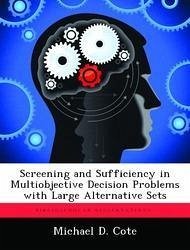Portfolio selection problems with combinatorially-large alternative sets can be impossible to evaluate precisely on a reasonable timescale. When portfolios require complex modeling for performance assessment, prohibitive computational processing times can result. Eliminating a small number of alternatives through an intelligent screening process can greatly reduce the number of alternative combinations, thereby decreasing a problem's evaluation time and cost. A methodology was developed for the class of hierarchical portfolio selection problems in which multiple objectives are all judged on the same sub-objectives. First, a novel capability-based alternative screening process was devised to identify and remove poor alternatives, thereby reducing the number of portfolios. Then, a performance-based portfolio screening process was explored to estimate portfolio sufficiency according to the performance requirements of the decision maker. Following the establishment of a set of sufficient portfolios, the analyst can employ higher resolution post-analysis methods to choose a final solution. Finally, the methodology was applied to a portfolio selection problem in which the United States Strategic Command attempts to select an ideal mix of intelligence, surveillance, and reconnaissance assets. After deconstructing the actual objective hierarchy, a set of representative alternatives were evaluated and a variety of screening procedures were applied to demonstrate significant reduction in the number of possible portfolios.







